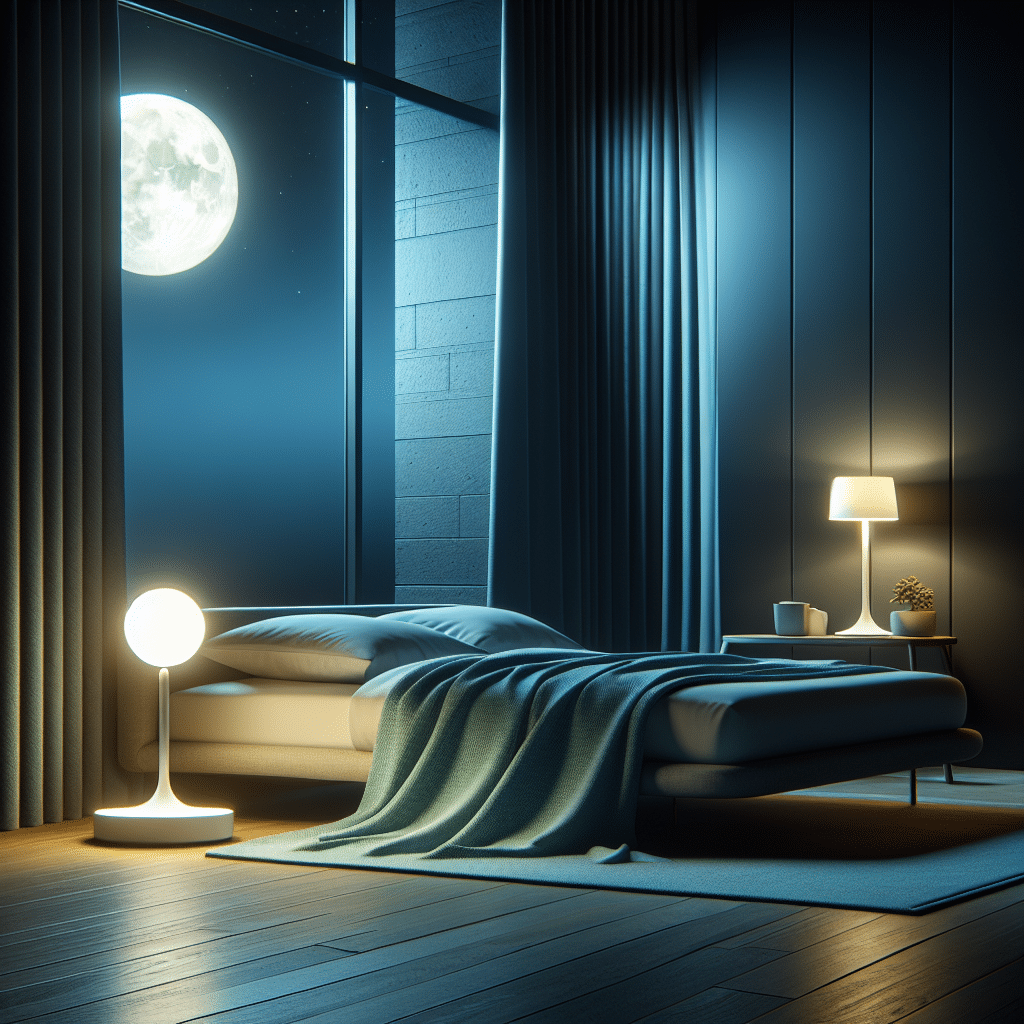Understanding Smart Lighting and Its Impact on Sleep Hygiene
The Science of Sleep and Light
Sleep hygiene refers to practices and habits that promote better sleep quality. Essential to this is the concept of circadian rhythms, the body’s natural clock that regulates sleep-wake cycles. Light plays a crucial role in this, influencing hormone release such as melatonin, which is responsible for sleepiness. Understanding how different lighting influences these biological processes is key to enhancing sleep hygiene.
What is Smart Lighting?
Smart lighting systems consist of LED bulbs and fixtures that can be controlled wirelessly, typically via mobile apps, home assistants, or automated systems. These lights can adjust brightness, color temperature, and schedules in response to user preferences or environmental conditions. Such capabilities allow users to create an ambiance conducive to better sleep.
The Role of Color Temperature
Color temperature is measured in Kelvin (K). Warm light (around 2700K) is typically used in the evening to promote relaxation, while cooler light (5000K and above) increases alertness. Smart lighting can adjust color temperatures throughout the day, transitioning from cooler tones in the morning to warmer hues in the evening. This gradual change can signal to the brain that it’s time to wind down, aiding in the natural sleep cycle.
Circadian Rhythm Regulation
Exposure to blue light, primarily emitted by electronic devices and cool-toned LEDs, can hinder the secretion of melatonin. In contrast, red and warm lighting becomes important as day turns to night. Smart lighting can automate these transitions, reducing blue light exposure in the evening, thus supporting the body’s natural circadian rhythms. By synchronizing with the sunset and sunrise, smart systems help maintain a healthy sleep-wake cycle.
Automated Sleep Schedules
Many smart lighting systems come equipped with features allowing for custom schedules. Users can set their lights to dim gradually at night and brighten slowly in the morning, mimicking natural sunlight. This can create a more significant hormonal response from the body, easing the transition into and out of sleep. Reliable wake-up lighting can decrease grogginess, making it easier to start the day.
Impact on Overall Sleep Quality
Multiple studies indicate that the quality of light exposure significantly influences sleep outcomes. High-quality smart lighting can reduce sleep latency—the time it takes to fall asleep—by creating an environment that fosters relaxation. Furthermore, it can also lead to deeper, more restorative sleep by reducing wakefulness during the night. Efficient smart lighting illuminates areas where needed without overwhelming brightness, contributing to a restful atmosphere ideal for sleep.
Utilizing Dimming Features
Dimming features of smart lighting are particularly beneficial for sleep hygiene. Dimming lights in the hours leading up to bedtime can promote relaxation and trigger physiological signals to prepare the body for sleep. In contrast, harsh and bright lighting can be stimulating, making it harder to wind down. By controlling the intensity of light, smart systems empower individuals to cultivate a more conducive resting environment.
Creating Personalized Settings
Every individual has unique preferences for light intensity and color temperature. Smart lighting allows users to create personalized settings that help them feel at ease. For instance, a calming night light can help children or light-sensitive individuals feel secure during the night. Such customization is vital for maintaining a space conducive to rest, thus enhancing sleep hygiene.
Syncing with Other Smart Home Devices
Smart lighting can integrate seamlessly with other smart home devices, further supporting sleep hygiene. For example, humidity detectors and smart thermostats can work in conjunction with lights to create optimal living conditions at night. Consistent temperature and moisture levels can enhance sleep quality when paired with the right lighting. This comprehensive approach ensures an environment tailored specifically for relaxation and restfulness.
Noise Reduction through Lighting
Although lighting doesn’t directly reduce noise, smart lighting systems can help create an atmosphere that feels more restful. By utilizing color and intensity to evoke tranquility, users may perceive their environment as less intrusive. For instance, creating a warm, cozy space with dimmed lights can reduce the perception of external disturbances, aiding in better sleep quality.
Enhancing Nighttime Routines
Incorporating smart lighting into evening rituals can enhance bedtime routines. Gradually dimming lights while performing activities such as reading, meditating, or taking a warm bath prepares both the mind and body for sleep. Furthermore, pairing these routines with consistent light schedules reinforces the body’s instinctual responses to darkness and light cycles, thereby integrating healthy habits into daily life.
Monitoring Sleep Patterns
Some smart lighting systems can pair with sleep tracking devices to monitor sleep quality and adjust lighting conditions accordingly. For instance, if a user is restless, the system might trigger a warmer light to encourage sleepiness or a softer glow to reduce disturbances. This data-driven approach empowers users with insights into how their lighting environments correlate with sleep quality, facilitating improvements.
Environmental Considerations
Smart lighting often incorporates energy-efficient LED technology, which is not only beneficial for sleep but also for environmental sustainability. Reduced energy consumption leads to lower electricity bills and a smaller carbon footprint. Choosing eco-friendly smart lighting options can contribute to overall well-being by fostering a healthier living space and reducing noise and light pollution within the surrounding community.
Conclusion
Smart lighting revolutionizes the way we approach sleep hygiene. By understanding the nuances of color temperature, automated schedules, and personalized settings, users can optimize their environments to promote better sleep. Integrating smart lighting systems enhances wellbeing while offering a customizable solution that aligns with individual preferences, ultimately leading to higher sleep quality and overall health.
